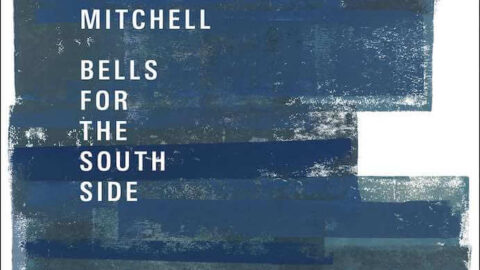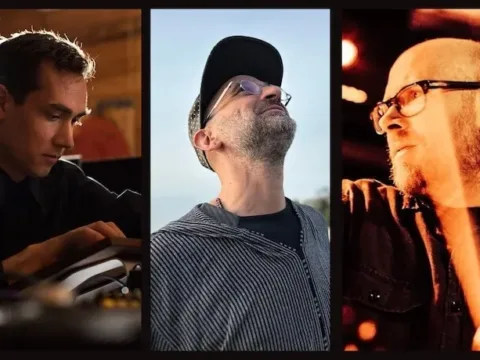The new album Bells for the South Side, released by ECM Records on June 16, 2017, features multi-instrumentalist, composer, and improviser Roscoe Mitchell’s four trio ensembles, which are presented individually and combined in new and fresh ways. This album documents two concerts that he gave in September 2015 at the Museum of Contemporary Art in Chicago as part of an exhibition celebrating the 50th anniversary of the Association for the Advancement of Creative Musicians (AACM)—a collective of African-American musicians founded on the South Side of Chicago in 1965.
A founding member of the AACM, Mitchell later created the Art Ensemble of Chicago, the AACM’s flagship ensemble for many years. As George E. Lewis writes in his 2008 book A Power Stronger Than Itself: The AACM and American Experimental Music, the AACM promoted individual development within the context of the community. These same principles of cooperation and individuality are also highlighted on Bells for the South Side.
The album begins with “Spatial Aspects of the Sound,” a composition by Mitchell for two pianos, percussion, and piccolo. We hear warm, resonating chords on the two pianos and tubular bells, highlighting the sound of the bell—a theme that Mitchell frequently returns to throughout the album. Later, Kikanju Baku enters the stage dancing with wrist and ankle bells, a tribute to the late Malachi Favors.
The next piece’s title, “Panoply,” refers to a 1967 painting by Mitchell. Many of the AACM members engaged with other art forms in addition to music. Mitchell’s 1967 painting is densely structured with vibrant colors, characteristics that are in turn reflected in the musical composition. The piece starts with an ostinato passage on the xylophone, cymbal, and snare drum—a passage that returns throughout the work.
“Prelude to a Rose” features the album’s first trio: Mitchell, composer and multi-instrumentalist Tyshawn Sorey, and trumpeter Hugh Ragin. This work is like a theatrical scenario. Following a slow, somber chorus, the performers engage in a humorous three-way conversation via their instruments. I’m reminded of Paul Steinbeck’s discussion of the intermedia elements incorporated by the Art Ensemble of Chicago—elements such as poetry, costumes, masks, face paint, gesture, and movement. The second trio—consisting of Mitchell, keyboardist Craig Taborn, and percussionist Kikanju Baku—performs “Dancing in the Canyon.” After a quiet and mysterious opening, Mitchell leads the ensemble in an intensity structure—a massive buildup to a dense texture in which the musicians simultaneously play contrasting material.
Since “Ep 7849” is an elaborate, through-composed transition, the title track “Bells for the South Side” feels like an arrival. It showcases what I take to be the specific bells alluded to in the title—Roscoe Mitchell’s percussion cage and the percussion set-ups of Don Moye and Malachi Favors. I interpret the piece as a tribute to the Art Ensemble of Chicago—in particular, Lester Bowie and Malachi Favors, who weren’t alive to celebrate the AACM’s anniversary—and to the community of the South Side of Chicago, which played an active role in the AACM from the beginning. The musical work, which has a ternary form, begins with a short introduction of sleigh bells, an alarm, and chimes. A siren (Varèse?) signals the onset of the first section—a beautiful, majestic theme played on the piccolo trumpet. The contrasting second section has a low, ominous element recalling the previous piece. The final section brings back the piccolo trumpet, though its melodic material is now transformed.

The third trio features two artists with whom Mitchell has collaborated for many years: percussionist Tani Tabbal and bassist Jaribu Shahid. They perform “Prelude to the Card Game, Cards for Drums, and the Final Hand,” which highlights the bass and drums—normally associated with the rhythm section—as melodic instruments. Mitchell improvises over Shahid’s melodic line, followed by a virtuosic drum solo by Tani Tabbal. The fourth trio includes two of Mitchell’s colleagues at Mills College: multi-instrumentalist and composer James Fei and percussionist William Winant. “Six Gongs and Two Woodblocks” features Mitchell as a master of extended techniques (microtones, multiphonics, circular breathing). In the final piece, “Red Moon in the Sky,” all of the musicians gather to perform an extended intensity structure, like an expanded version of the one found in “Dancing in the Canyon.” The album ends with “Odwalla,” a classic of the Art Ensemble of Chicago.
This album demonstrates the same sort of mobility of genre that the AACM was able to accomplish. While celebrating the AACM’s rich history, it also points to the future. Moreover, the album draws attention to music’s potentially transformative role within the community. This is an important lesson for today’s listeners.
























